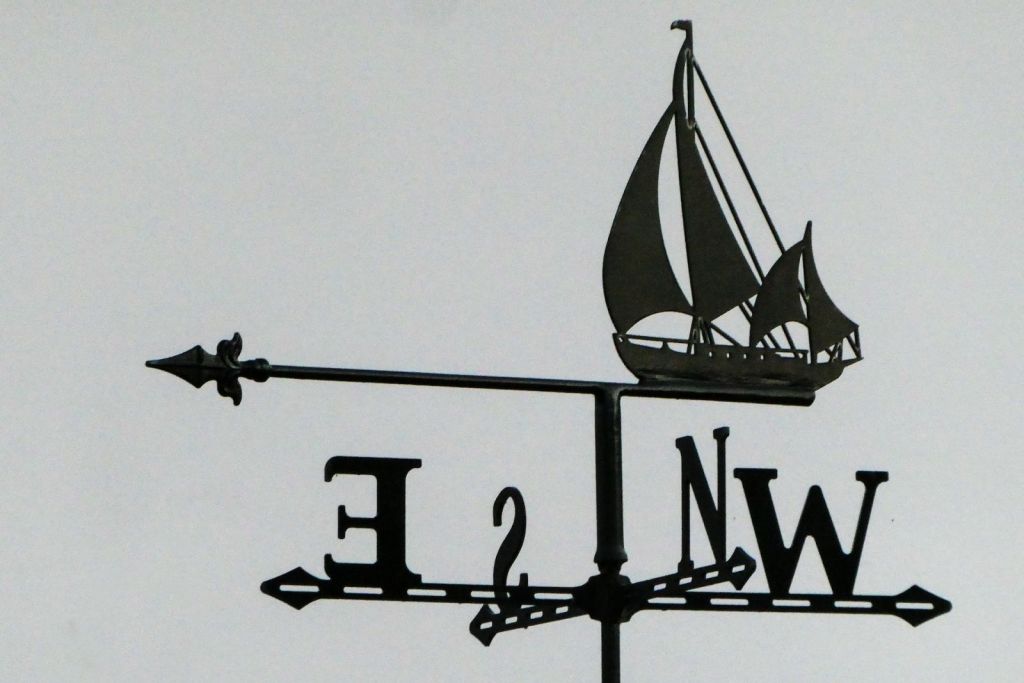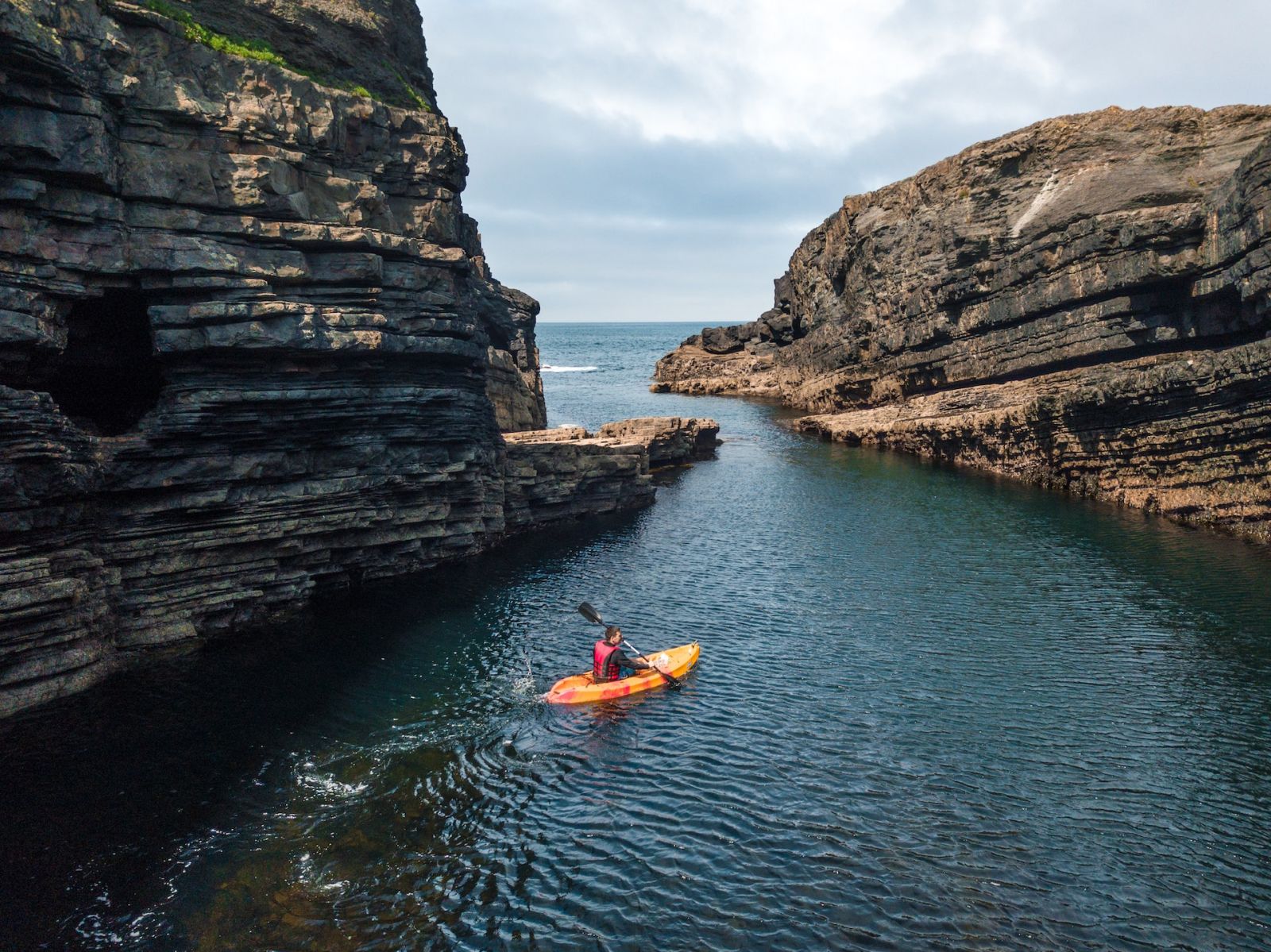Can You Sail In Any Direction? (Yes, Sort Of)
As a sailor, you may have wondered if it's possible to sail in any direction. While the answer to this question is not a simple yes or no, the ability to sail in various directions largely depends on your skills, the wind, and your sailboat's capabilities. The wind plays a crucial role in determining the course your sailboat can take. A sailboat can only move within a range of angles relative to the wind, known as the sailing range.
Boats are generally free to sail in any direction on the open sea but must comply with local navigation rules and regulations when navigating in restricted waters. There is a no-go zone where sailing directly into the wind is impossible. However, you can navigate using techniques like tacking and jibing.
Tacking and jibing are sailing techniques that enable you to effectively sail into the wind by zigzagging back and forth. Below, you'll find other ways that can help you sail in any direction.
Summary
- In general, you can sail in any direction on the open sea, subject to the prevailing weather and sea conditions.
- In restricted waters, such as in ports, harbors, or narrow channels, you must follow specific routes and comply with local navigation rules and regulations.
- While it is not possible to sail directly into the wind, your boat design, sail rigging, and sailing skill determine your sailable directions.
- Technology like the GPS assists in sailing by providing more accurate navigation, communication, weather forecasting, and automation.

On this page:
You Can Sail In Any Direction, But...
You have to consider the wind and water currents, your boat design, sail rigging, and sailing skill.
Wind influence on your direction
The wind can determine the direction and speed of your boat. As a sailor, you can't sail directly into the wind, but you can sail at various angles to it. You can do this by positioning the sails so that they catch the wind and generate lift, which then pulls the boat forward.
When the wind is coming from the side of the boat, you need to adjust the sails accordingly to harness the energy and propel the boat in the desired direction. Additionally, when the wind is coming from behind the boat, it pushes against the sails and simply shoves the boat forward.
For a complete guide on how sails actually work, you can read this article.
Water currents impact your direction
Water currents impact the direction you can sail, especially in certain bodies of water with strong and predictable currents. In some cases, these currents can push your boat off course, while in others, they might aid in your desired direction.
To effectively sail in any direction, be aware of and adapt to the currents and their influence on your boat's movement. If you anticipate and account for the flow of water, you can make adjustments to your sail trim and course, maximizing your efficiency and control while sailing.
Boat design and its sailing directions
Different hull shapes and keel configurations can affect the boat's ability to change course and maneuver against various wind conditions. For example, some boats can sail closer to the wind, while others are better optimized for sailing downwind or reaching. It is important to know your boat's capabilities and limitations to maximize its potential.
| Boat Type | Hull Shape | Keel Configuration | Optimized for Which Sailing Direction |
|---|---|---|---|
| Sloop | V-shape | Fin keel | Sailing upwind |
| Cutter | V-shape | Fin keel | Sailing upwind |
| Ketch | Round or flat-bottomed | Full keel and/or centerboard | Sailing across the wind |
| Yawl | Round or flat-bottomed | Full keel and/or centerboard | Sailing across the wind |
| Catamaran | Flat-bottomed | Daggerboards or skegs | Sailing downwind |
| Trimaran | Flat-bottomed | Daggerboards or skegs | Sailing downwind |
| Schooner | V-shape or round | Full keel and/or centerboard | Sailing upwind |
-
Sailing downwind: Catamarans and trimarans are generally better optimized for sailing downwind due to their wide beam and large sail area. They can catch more wind and use it to move faster in this direction.
-
Sailing upwind: Sloops, cutters, and schooners are generally better optimized for sailing upwind due to their ability to point closer to the wind. They have a narrow beam and a deep keel, which allows them to cut through the water and maintain their course against the wind.
-
Sailing across the wind: Ketches and yawls are generally better optimized for sailing across the wind due to their ability to balance the sail area between the main and mizzen sails. This allows them to maintain a steady course and sail efficiently in this direction.

Sail rigging and the sailable directions
The size, shape, and arrangement of sails on a boat will determine how it responds to wind directions. Some common sail configurations include:
| Sail Configuration | Sail Arrangement | Strengths | Weaknesses |
|---|---|---|---|
| Sloop Rig | Single mast with one mainsail and one jib | Good for upwind sailing, easy to handle, good speed | Limited sail area for downwind sailing, can be overpowered in strong winds |
| Cutter Rig | Single mast with one mainsail and two or more headsails | Good for upwind sailing, versatile in different wind conditions, good speed | More complex to handle, can be overpowered in strong winds |
| Ketch Rig | Two masts with a mainsail, a mizzen sail, and one or more headsails | Good for sailing across the wind, balanced sail area, good speed | More complex to handle, less efficient upwind and downwind |
| Yawl Rig | Two masts with a mainsail, a mizzen sail, and one or more headsails | Good for sailing across the wind, balanced sail area, good speed | Less efficient upwind and downwind, more complex to handle |
Each configuration has its strengths and weaknesses when dealing with specific sailing angles. Rigging adjustments, such as reefing and fine-tuning sail trim, can have a significant impact on performance and sailable directions.
The most common sail configurations for recreational sailing are the sloop and the cutter rigs. These configurations are simple to handle and offer good performance in a variety of wind conditions. The sloop rig is the most common and consists of a single mast with a mainsail and a jib. The cutter rig is similar but has two or more headsails in addition to the mainsail.
The ketch and yawl rigs are also fairly common, especially among cruising boats, as they offer more balanced sail area and can be more efficient when sailing across the wind.
Your sailing skill and the directions in which you can sail
As you gain experience, you'll learn how to maximize the efficiency of your sails and your boat's capabilities. This will allow you to sail closer to the wind, to tack and jibe smoothly in various conditions, and to effectively utilize shifts in wind direction.
Moreover, understanding the points of sail, such as close-hauled, reaching, and running, will improve your ability to navigate through different wind angles, making it seemingly more feasible to sail in any direction.

Sailing In Different Directions
Depending on the wind direction, you might need to adapt your sailing technique to effectively move your sailboat. The directions are based on the angle between the wind and the direction in which the boat is sailing. Here are some key sailing techniques, focused on reaching, running, and beating.
Reaching
Reaching is a popular and efficient sailing technique in which the wind comes from the side of your boat. The two types of reaching are close reach and beam reach.
When sailing on a close reach, you'll angle your boat towards the wind source, keeping it around 40 degrees off the wind. To maintain speed, adjust your sails to keep them filled with air while avoiding being too close to the wind.
Beam reach is the most efficient point of sail. The wind comes directly from the side (beam), and your boat moves at a 90-degree angle to the wind. Ensure your sails are fully extended and create an aerodynamic shape to take advantage of the wind pressure.
Sailing across the wind means sailing at a right angle to the wind. This direction can be challenging, as the boat must maintain a balance between the wind pushing the sails and the water pushing against the hull. This direction can be sailed more efficiently with a beam reach, where the wind is at a 90-degree angle to the boat.
Running
Running involves sailing downwind, which means the wind is pushing your boat from behind. In this scenario, adjust your sails to capture as much wind as possible. Spread them out like wings to maximize their surface area, allowing the wind to fill them in.
Sailing downwind means sailing with the wind behind the boat. This is the easiest direction to sail in, as the wind fills the sails and propels the boat forward. However, it can be difficult to control the boat's speed and direction in this direction.
Keep in mind that sailing downwind can lead to unstable conditions if not done correctly. Watch for potential accidental jibes, where the wind can force the boom to swing dangerously across the boat. To avoid this, maintain a steady course and always be aware of wind shifts.
Beating
Beating refers to sailing as close to the wind as possible, also known as sailing upwind. Since you can't sail directly into the wind, you'll need to zigzag your way by alternating between close-hauled sailing and tacking.
On a close-hauled course, angle your boat about 40 degrees off the wind. Trim your sails tightly to create a streamlined shape that allows the boat to move efficiently through the water.
To tack, or change direction, simply turn your boat through the wind, making sure to switch the sides of your sails as you do so. By consistently alternating between these angles, you'll inch your way closer to your upwind destination.
Sailing upwind means sailing against the wind. This is the most challenging direction to sail in, as the boat must tack back and forth to make progress. Tacking involves turning the bow of the boat through the wind, which allows the sails to fill on the opposite side and propel the boat forward.

Challenges in Sailing in Any Direction
In this section, we discuss the challenges that prevent you from sailing in any direction with ease, such as opposing winds, tides and currents, and navigational hazards.
Opposing winds
A sailboat can only move within a range of angles relative to the wind, called the sailing angle. Sometimes you will encounter opposing winds, making it difficult to sail in the direction you desire. To overcome this, you need to master a technique called tacking, which allows you to change direction without losing speed while navigating around obstacles and sailing upwind.
Tides and currents
These natural forces can sometimes work against you, limiting your ability to sail in a specific direction. By understanding how tides and currents affect your boat's movement, you can adjust your course accordingly and compensate for their influence. Be sure to plan your route in advance and factor in the tide and current conditions to ensure you sail efficiently.
Navigational hazards
These can include submerged rocks, shallow areas, and obstructions such as shipwrecks or sandbars. Navigational hazards can damage your boat or, even worse, lead to capsizing. Make sure to study charts of the area you will be sailing in and become familiar with potential hazards before setting sail. By doing so, you can adjust your course to avoid these dangers and sail in any direction more safely.
How Technology Assists in Sailing
Technology plays a crucial role in modern-day sailing, helping boats navigate more efficiently and safely. Here are a few ways in which technology assists in sailing:
Navigation: GPS (Global Positioning System) is a satellite-based navigation system that enables boats to determine their precise location and navigate accurately. Electronic charts and mapping software also allow boats to plan routes, avoid hazards, and optimize navigation.
Communication: Communication technology, such as satellite phones and radios, enables boats to stay in touch with other vessels, port authorities, and emergency services. This helps to ensure safety and efficient navigation.
Weather forecasting: Weather forecasting technology provides boats with real-time weather updates and alerts, allowing them to plan their routes and avoid severe weather conditions.
Automation: Automation technology, such as autopilot systems and engine management systems, helps boats operate more efficiently and safely. This technology can help reduce fatigue on the crew and improve fuel efficiency.
Safety equipment: Technology also plays a crucial role in safety equipment, including life rafts, life jackets, and emergency beacons. These devices can help save lives in the event of an emergency.
Did you find the answer to your specific question?
👍 0 👎 0



Leave a comment